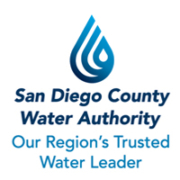The Claude “Bud” Lewis Carlsbad Desalination Plant is celebrating its fifth year of operation this month. More than 65 billion gallons of water from the plant have provided a sustainable and reliable supply to businesses and residents of San Diego County since December 2015.
The Carlsbad Desalination Plant produces more than 50 million gallons of high-quality, locally controlled, water every day. It’s a foundational water supply for the San Diego region that minimizes the region’s vulnerability to drought or other water supply emergencies.
Desalination plant diversifies region’s water supply sources
“The desalination plant is a key piece of the region’s multi-decade strategy to diversify our water supply portfolio,” said Sandra L. Kerl, general manager of the San Diego County Water Authority. “As we celebrate five years of operation, the plant continues to provide a drought-proof supply that reduces our dependence on imported water sources vulnerable to droughts, natural disasters, and regulatory restrictions.”
A 30-year Water Purchase Agreement between Poseidon Water and the Water Authority allows for the production of up to 56,000 acre-feet of water per year, enough to meet the needs of approximately 400,000 people. The facility is the largest, most technologically advanced and energy-efficient desalination plant in the nation.
Carlsbad Desalination Plant celebrates water supply accomplishment
“The Carlsbad Desalination Plant was once merely an ambitious vision. Fast forward to today, and we are celebrating the plant’s fifth anniversary of operations, during which we have successfully produced enough water to meet the needs of San Diego County residents,” said Carlos Riva, CEO of Poseidon Water. “This is an incredible accomplishment and an example of how communities throughout California can invest in the state’s future water security.”
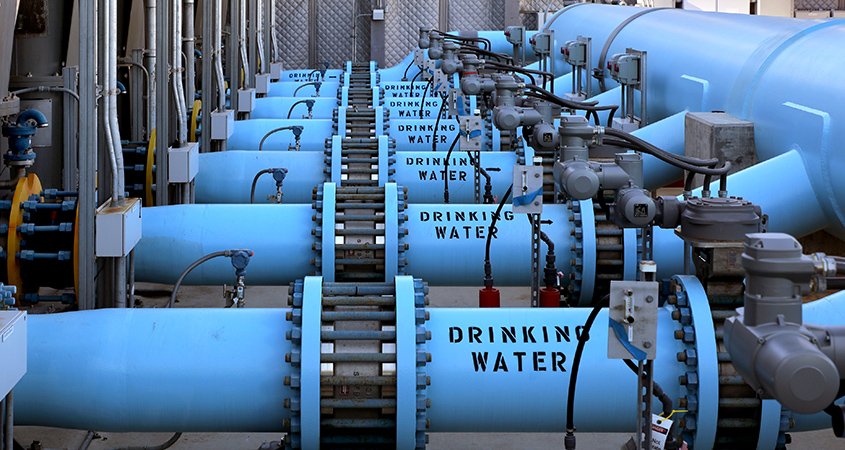
The Carlsbad plant uses reverse osmosis to produce approximately 10% of the region’s water supply; it is a core supply regardless of weather conditions, and it is blended with water from other sources for regional distribution. Photo: San Diego County Water Authority
Desalination uses reverse osmosis technology to remove water molecules from seawater. Water from the ocean is forced through tightly-wrapped, semipermeable membranes under very high pressure. The membranes allow the smaller water molecules to pass through, leaving salt and other impurities to be discharged from the facility.
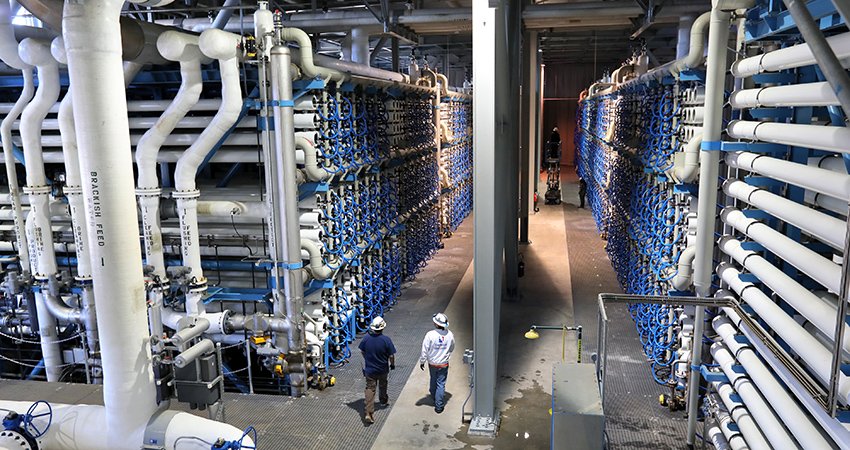
Reverse osmosis is the heart of the Carlsbad plant. During this process, dissolved salt and other minerals are separated from the water, making it fit for consumption. This reverse osmosis building contains more than 2,000 pressure vessels housing more than 16,000 reverse osmosis membranes. Photo: San Diego County Water Authority
Milestones
July 22, 2020: New Seawater Intake Pumps Preserve Marine Environment
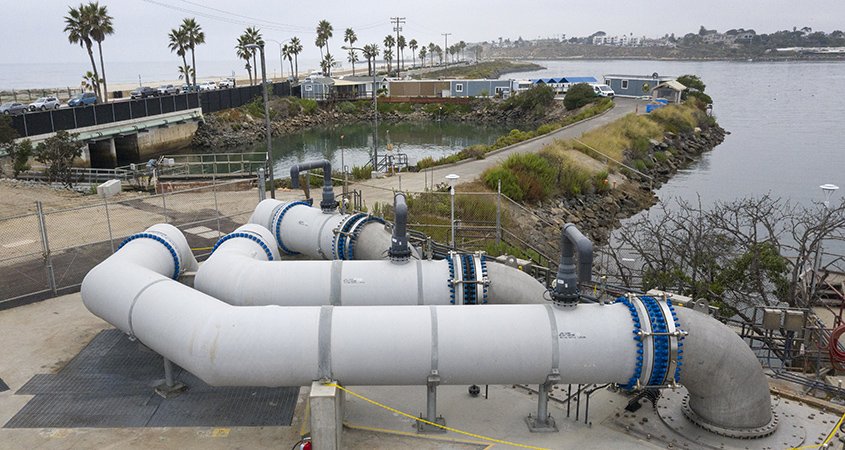
Three new fish-friendly seawater intake pumps, commissioned in July 2020 at the Claude “Bud” Lewis Carlsbad Desalination Plant, are among the most environmentally advanced intake pumps in the world. The pumps are part of a broader effort to ensure the long-term health of the marine environment near the Plant, which sits on the shores of Agua Hedionda Lagoon. Photo: San Diego County Water Authority
Installation of the new intake pumps is part of a phased program to replace the existing seawater intake and discharge facilities with state-of-the-art technology to protect marine life. The technology wasn’t available when the plant was operating with source water from the Encina Power Station.
The next steps include adding new intake screens, designed to prevent any sea-life larger than 1 millimeter (thicker than a credit card) from entering the plant. The new intake screens are the final part of upgrades, which when complete in 2023, will make the Carlsbad Desalination Plant the first desalination facility in California to comply with the 2015 California Ocean Plan Amendment, among the most advanced sea-life protection measures.
December 13, 2018: Carlsbad Desalination Plant Celebrates 40 Billion Gallons Served
Desalination plant project partners Poseidon Water and the San Diego County Water Authority celebrated delivering 40 billion gallons of drought-resilient drinking water to San Diego County during three years of commercial operations at the plant.
“It’s incredible what we’ve accomplished in three years,” said Sandra L. Kerl, at the 2018 celebration event, general manager of the Water Authority. “Since coming online in 2015, the Carlsbad Desalination Plant has met nearly 10 percent of the region’s water demand, and it will be a core water resource for decades to come.”
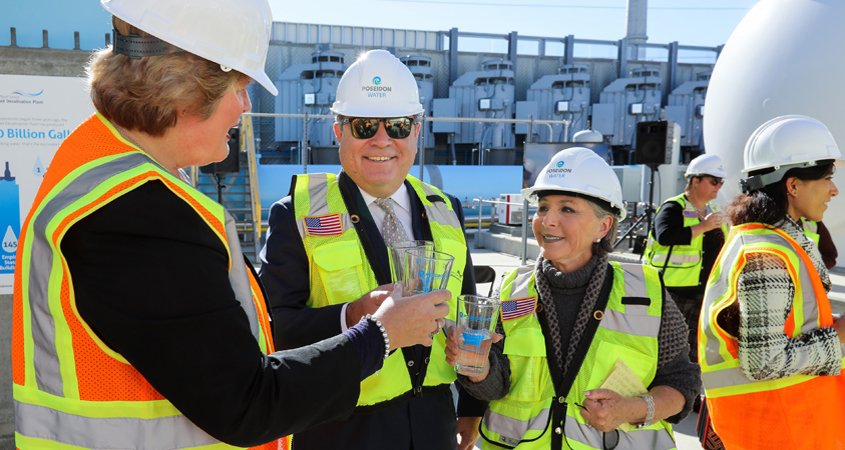
Officials toasted a significant milestone in regional water supply reliability on December 13, 2018 at the Carlsbad Desalination Plant – the delivery of 40 billion gallons of drinking water during the plant’s first three years of commercial operations. (L to R: Water Authority Deputy General Manager Sandra Kerl, Poseidon Water CEO Carlos Riva, and former U.S. Senator Barbara Boxer share a toast at the third anniversary event. Photo: San Diego County Water Authority)
December 14, 2015: Region Dedicates New Plant in Honor of Former Carlsbad Mayor Claude ‘Bud’ Lewis
Operations are under way at the nation’s largest and most technologically advanced seawater desalination plant, which was dedicated today by more than 600 elected officials, community leaders and project partners. After successfully completing construction, the Claude “Bud” Lewis Carlsbad Desalination Plant has already produced more than 1.5 billion gallons of locally controlled water for San Diego County, helping to minimize the region’s vulnerability to the statewide drought.
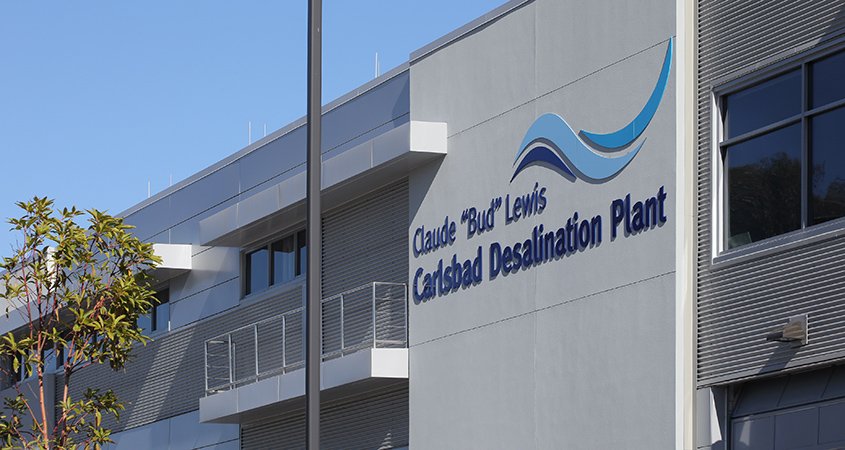
The Carlsbad Desalination Project included 1.5 million hours of work in Carlsbad, Vista and San Marcos, supporting an estimated 2,500 jobs and infusing $350 million into the local economy. Project partners included the Water Authority, Poseidon Water, IDE Technologies, Stonepeak Infrastructure Partners and Kiewit-Shea Desalination. Photo: San Diego County Water Authority
June 29, 2015: Pipeline Installation Completed
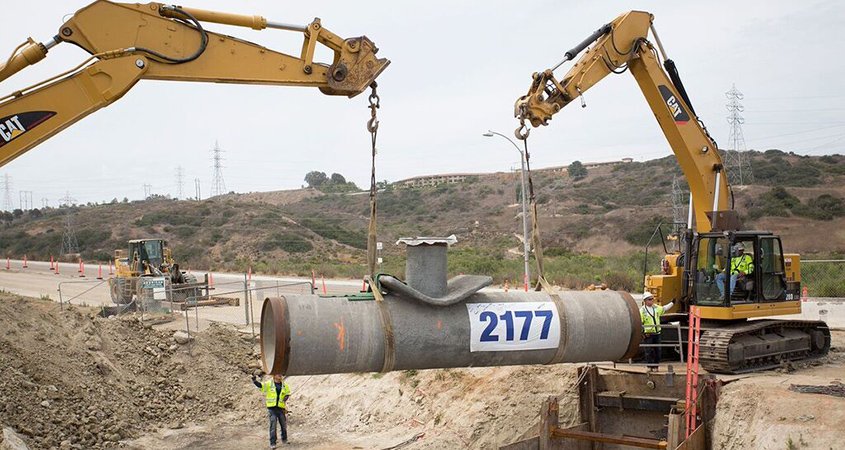
Construction of the 54-inch diameter pipeline began in spring 2013 in San Marcos. Crews worked in Carlsbad, Vista and San Marcos to reduce impacts on local businesses and residents. During the three-year construction process, the project supported an estimated 2,500 jobs and infused at least $350 million into the regional economy. Photo: San Diego County Water Authority
After more than two years of work, Carlsbad Desalination Project crews installed the final segment of the 10-mile conveyance pipeline that connects the Carlsbad Desalination Plant to the San Diego County Water Authority’s regional water distribution system. Construction crews lowered the final piece of pipe – No. 2177 – into Macario Canyon in Carlsbad on June 29, 2015, completing a major element of the historic project.
“This final piece of pipe is a significant milestone for the Carlsbad Desalination Project, and a sign that the entire construction project is entering its final phase,” said Peter MacLaggan, vice president of Poseidon Water, the project’s private developer.
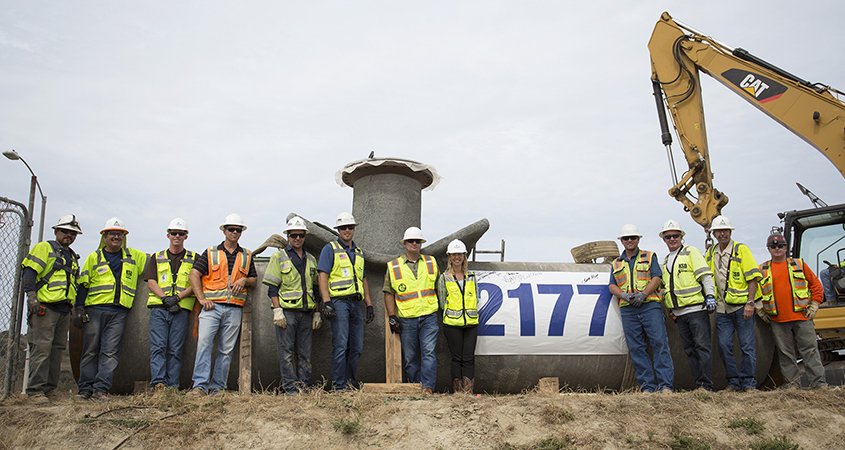
The final segment of the desalination project’s pipeline is installed on June 29, 2015. The pipeline stretches 10 miles from the plant through the cities of Carlsbad, Vista and San Marcos to the Water Authority’s Second Aqueduct. Photo: San Diego County Water Authority
January 2014: Desalination Plant Completes First Year of Construction
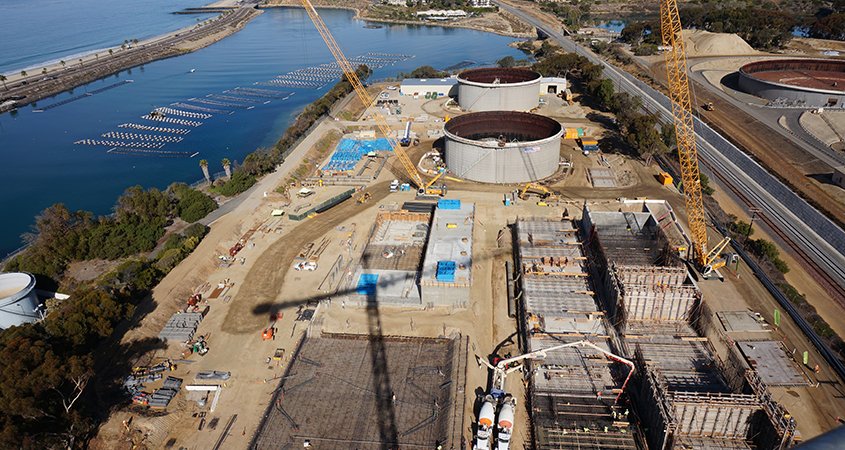
The Carlsbad Desalination Project includes a seawater desalination plant and a 10-mile, large-diameter pipeline. Construction on the plant began in late 2012 and pipeline construction began in spring 2013. Photo: San Diego County Water Authority
December 28, 2012: Construction Starts for the Carlsbad Desalination Plant
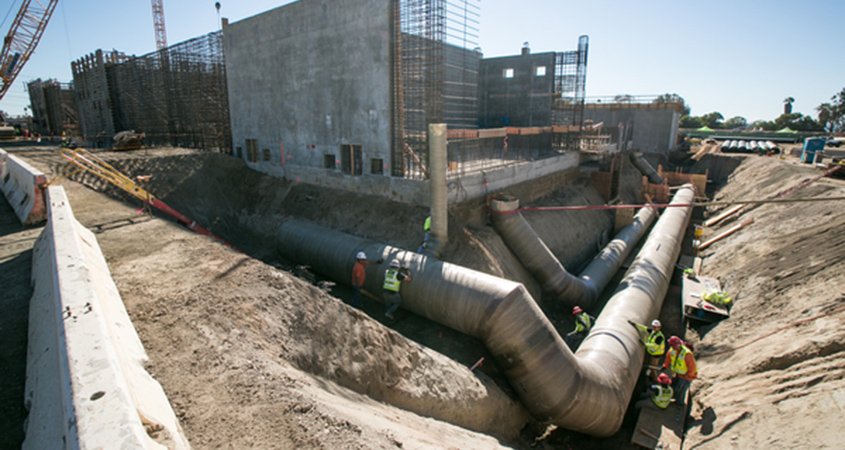
Construction of the Claude “Bud” Lewis Carlsbad Desalination Plant started on December 28, 2012. Photo: San Diego County Water Authority
November 29, 2012: Water Authority approves 30-year Water Purchase Agreement with Poseidon Resources
The San Diego County Water Authority approves a 30-year agreement for the purchase of up to 56,000 acre-feet of desalinated seawater per year from project developer Poseidon Resources. With the agreement approved, Poseidon and the Water Authority secured financing in the bond market and construction started a month later.











